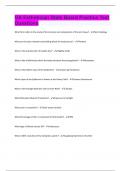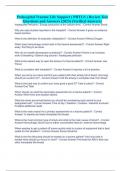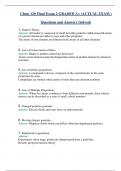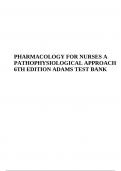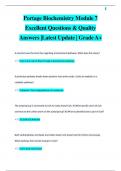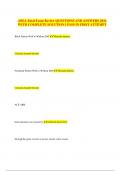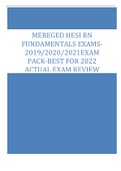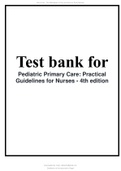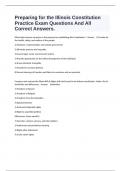Class notes
Pearson Nursing Diagnosis Handbook With NIC Interventions and NOC Outcomes Tenth Edition
- Institution
- Abington State University
The book is divided into three main parts: (a) An introduction to the use of nursing diagnoses; (b) complete plans of care for each NANDA International nursing diagnosis; and (c) a list of medical, surgical, psychiatric, perinatal, and pediatric conditions, each accompanied by nursing diagnoses ...
[Show more]




